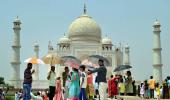'If you look at the entire 60-day period of March and April, you see that temperatures were soaring more than 3.5 degrees Celsius above the maximum temperature.'
'Normally, events like this happen only for a short period.'
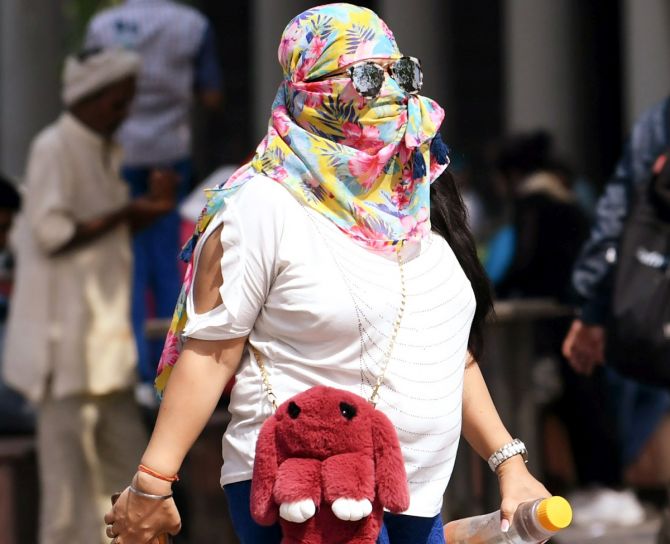
"It has impacted not just people, but energy too. Look at the way India has increased its coal mining -- by 29%! This is unprecedented," Climate scientist and IIT-Gandhinagar Professor Vimal Mishra tells Rediff.com's Shobha Warrier in the concluding part of a two-part interview.
Northern India and Pakistan faced the brunt of the heatwave.
Our studies based on data from 1950 show that this heatwave is an unprecedented event that we have not seen in the last 72 years.
Yes, it is more severe in Pakistan, western India and some parts of central India, not in southern India.
Even in Gujarat, it is not so severe compared to Pakistan, Rajasthan, Punjab, Himachal Pradesh, some parts of Nepal, some parts of Madhya Pradesh, etc.
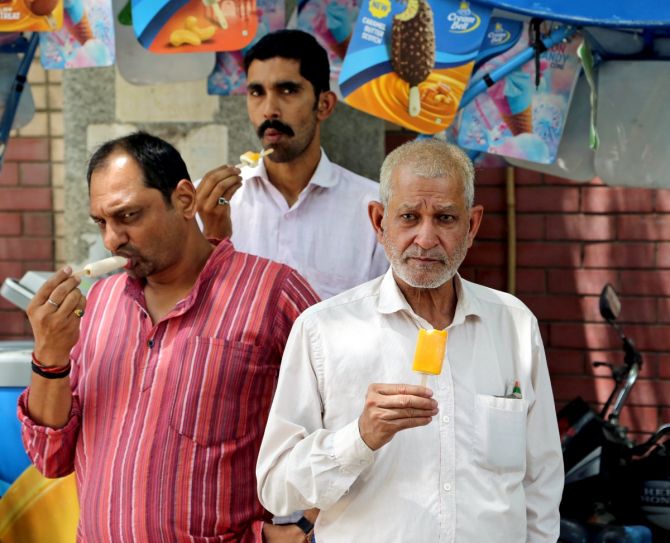
Some reports say that once again, it is going to be 3-4 degrees higher than the normal temperature.
It is, in fact, 4 degrees above normal!
Another unique aspect of this heatwave is it has lasted for a very long period.
If you look at the entire 60-day period of March and April, you see that temperatures were soaring more than 3.5 degrees Celsius above the maximum temperature.
Normally, events like this happen only for a short period.
If you look at the past heat waves, you will see that they had lasted only for 5-7-10 days; less than two weeks.
Why was tghe heat wave prolonged for such a long time?
It was prolonged due to not just one factor, but for multiple factors.
I must admit I do not have a concrete answer to this question because all of us are still studying the event.
An important factor that happened this time was we did not get any rainfall because of the western disturbances.
Normally, western India, northern India ad Pakistan receive quite a bit of rainfall during January, February and March. But this year was a very dry year.
When you don't have rain, there is no moisture in the ground, which in turn will heat up the atmosphere.
This might definitely have contributed to the heatwave, other than climatic variability and global warming.
What global warming does is that events that are likely to occur in natural conditions become more severe and intense.
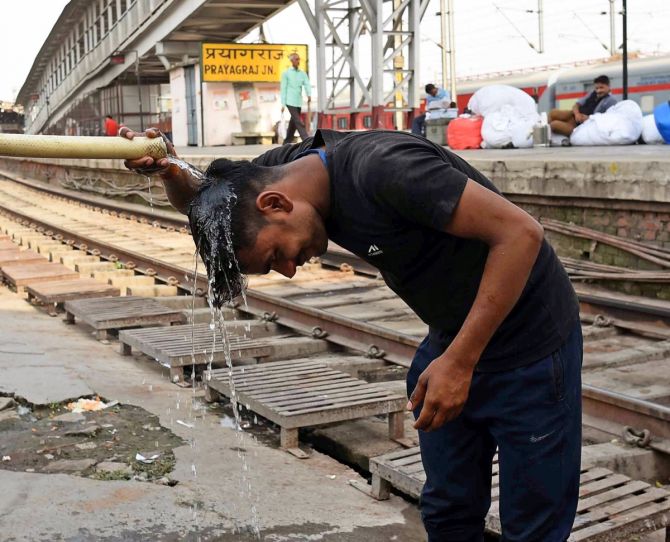
Some reports say the land surface temperature was terrifyingly high at 62 degree Celsius...
I don't believe these reports. More than 60 degrees over a large part of land area appears quite suspicious to me.
Yes, it can occur in some parts where you have concrete roads, cities or buildings.
It can never happen in the agricultural areas where you have vegetation.
I think the number is based on satellite feed which is calibrated based on in-situ data.
The range of calibration does not go to 50 degrees if they are calibrated to 40-45 degrees. Because of the high temperature we are witnessing now, it might have shown 62 degrees.
I don't think above 60 degrees can happen in a large ground surface; it can happen only in local areas.
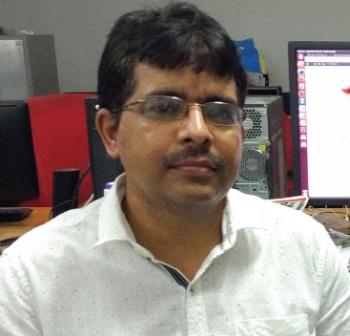
IMAGE: Professor Vimal Mishra.
Many climate scientists say the Indian subcontinent is very vulnerable to climate change. Why?
Not just climate scientists even the IPCC (Intergovernmental Panel on Climate Change) also says that the Indian sub-continent is highly vulnerable.
Working group 2 of the recent IPCC report talks about adaptation and vulnerability. I was a part of the negotiation team from the India side.
Now, why is the sub-continent more vulnerable than the others?
One, this region has a very high dense population.
So, when an event like the heatwave occurs, it affects a large number of people unlike how it might have affected a country like Russia.
The exposure to heatwaves or floods will be very high because we are densely populated.
Next is socio-economic vulnerability. Because of the socio-economic conditions of a very large population, this region is highly vulnerable.
The third point is hazard. How likely is an extreme climatic condition to occur? Because of global warming, such hazards are likely to occur more often than in the past.
When such hazards occur, highly vulnerable people will be exposed more and also impacted more.
That's why the Indian sub-continent region becomes a classic region where the risk of climate extremes is increasing very fast.
We are talking about limiting global warming to 1.5 degree Celsius, but we saw a rise of 3-4 degrees Celsius.
And we will see manifold change in terms of risk, hazard and exposure.
Is that why this heatwave got a lot of global attention?
It is a shock and surprise for the entire world because this heatwave has been continuing for a very long period of time, and has affected a large area.
Where do events like this impact more? Where there are more people. And this region is highly populated. So, when the impact is high, it will get global attention.
It has impacted not just people, but energy too.
Look at the way India has increased its coal mining -- by 29%! This is unprecedented.

Feature Presentation: Rajesh Alva/Rediff.com



